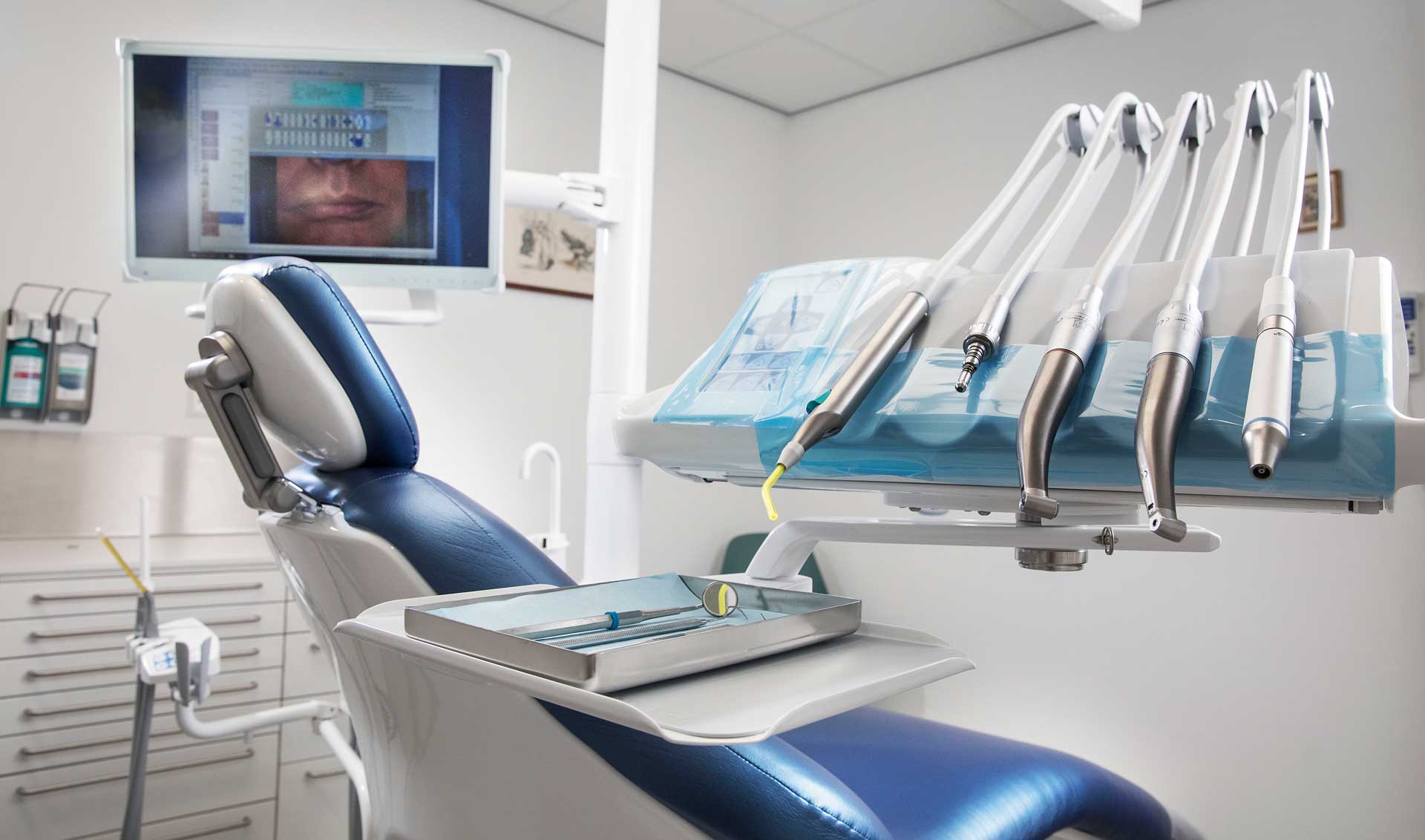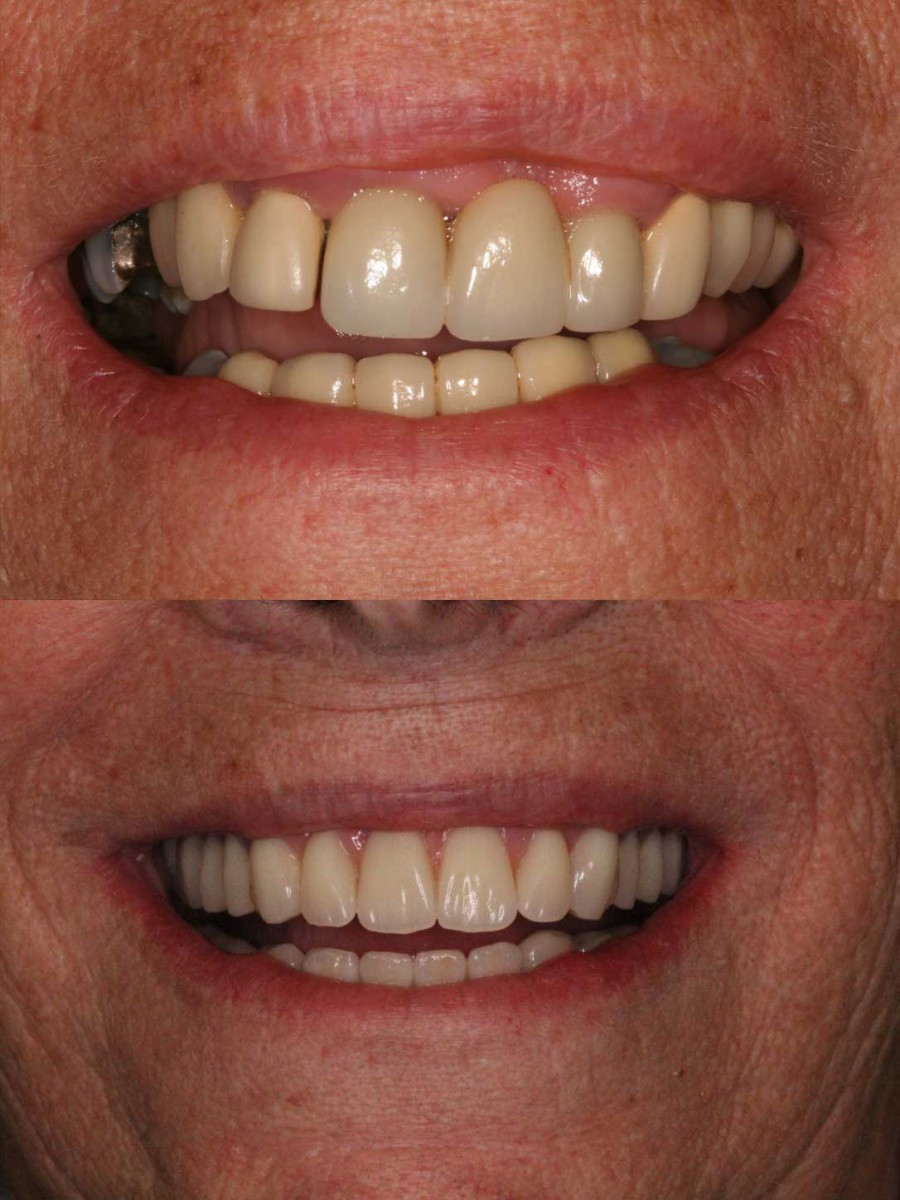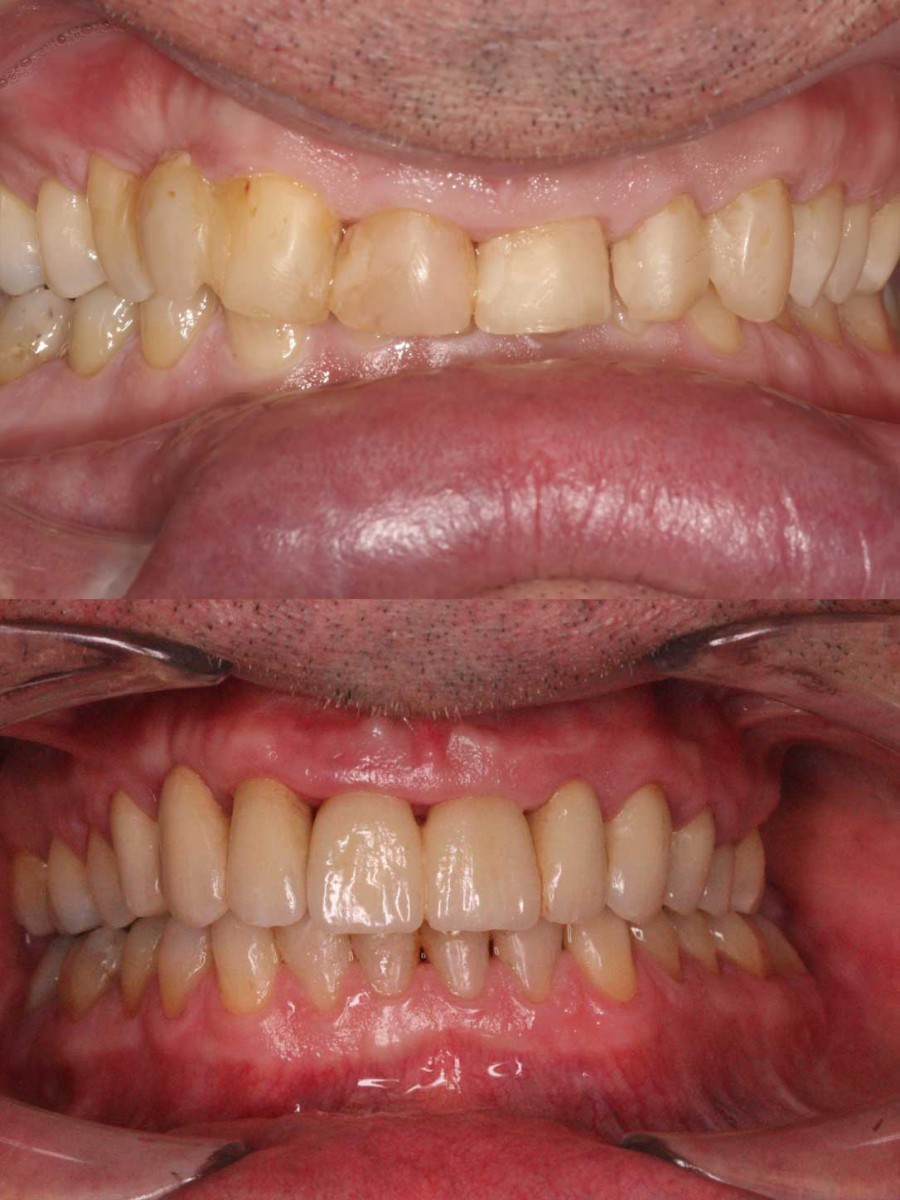
Reconstructive
Introduction
Often a seemingly 'minor' problem, such as an ever-breaking front tooth or crown, or the shortening of teeth and molars, conceals a more complex problem.
Custom Font Content
Course of treatment
During the first consultation, an exploratory interview takes place, often supplemented with an overview photo. Based on this information and the health questionnaire, we discuss the global problem, your wishes and complaints with you.
More information will be collected during a subsequent appointment. Subsequently, an extensive mouth examination takes place and study models, a bite registration and photos are made. If necessary supplemented with periodontium status and/or with X-rays.
During a subsequent appointment, the problems, the prognosis and the treatment options will be discussed with you. Sometimes a consultation with the orthodontist is required in case of a strongly deepened bite or migration of teeth. In the case of a disharmony in the face, for example due to a strongly recessed lower jaw or an inverted bite, a consultation with the dental surgeon is among the options. In such cases, we work together as a team with orthodontist Mulie and dental surgeon Zweer of the OrfeoKliniek.


Philosophy
To achieve an optimal end result, good treatment planning is crucial; the end result forms the guideline for planning (backward planning). First a diagnostic wax-up is made with which you get an image of the intended end result. Based on this, we can check whether this meets your expectations; if desired, we can adjust the result. We often use provisionals during the treatment process (temporary crowns and bridges made in the dental lab). This makes it possible to test the new situation and adjust it if necessary. It also offers the possibility to divide the treatment into phases. The provisionals serve as a guide for the definitive restorations.
In this manner our dentistry is not only problem-solving, but also offers the most guarantees for the future.

